I believe I have a lot to say about this issue! After 17 years of trading stocks, from an initial loss of 300,000, to now making a living from trading stocks, I only took 7 years.
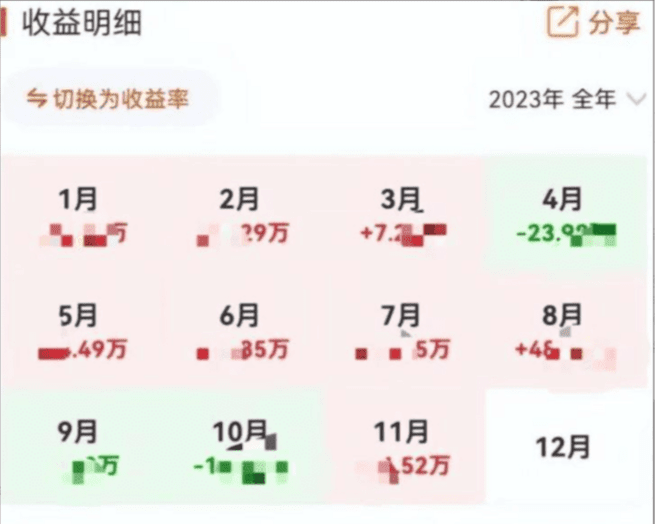
My style is to do ultra-short-term trading. When it comes to grasping the buying and selling points of stocks, it must be inseparable from the intraday chart +!
The intraday chart is the treasure for short-term traders to win, and it is also a window to observe the techniques of games or other institutions. If you can master the essence of intraday trading, you can have at least an 80% certainty in short-term trading. The true essence of short-term trading lies in the intraday chart.
The intraday chart is the most direct representation of stock price fluctuations, containing the most vivid, rich, and rapid stock price information among all charts. It helps us understand the current immediate power situation of bulls and bears in the stock market, providing important support for our precise strikes and real-time judgments in short-term trading. However, its speed also requires our actions to be decisive.
Intraday charts are continuous lines of prices every minute, accurately and instantly reflecting price trends. Intraday charts are the most direct and accurate tools for describing price movement. Unfortunately, many people believe that intraday charts are just a continuous line of price trends and have no reference value.
This is definitely not beneficial for doing short-term operations, especially for short-term index trading. Not really, intraday charts are the most practical technical indicators and have proven effective in the market.
Principles of intraday chart trading
1. In a rebound market, the yellow line runs below the white line. In such cases, unless you really find the large-cap stocks, it's very difficult to win.
2. In a rebound market, the yellow line runs above the white line. The corresponding strategy is: focus on individual stocks, lighten the overall market.
3. In a downtrend market, the yellow line runs below the white line. Such a market is neither dead nor alive, and there will be no significant rise; it's very difficult to operate.
The most critical thing is that sometimes weighted stocks rise while small and mid-cap stocks do not keep up, and the high points formed afterward are often significant peaks.
4. In a downtrend market, the yellow line runs above the white line. In this case, small and mid-cap stocks will constrain the downward speed of market-weighted stocks. Most
The bad situation is that weighted stocks continue to decline, while small and mid-cap stocks are relatively active.
Intraday charts are traces of capital movements throughout the day. By summarizing the different shapes of intraday charts, one can improve their trading skills.
Individual stock intraday buying and selling skills:
Volume shrinks while rising - volume-price divergence +
After individual stocks rise in the intraday, stock prices continue to climb, accompanied by a decrease in trading volume, forming a volume-price divergence. At this point, the stock price is very likely to experience a peak and pullback. Therefore, investors should avoid chasing high prices, control their positions, or clear out.
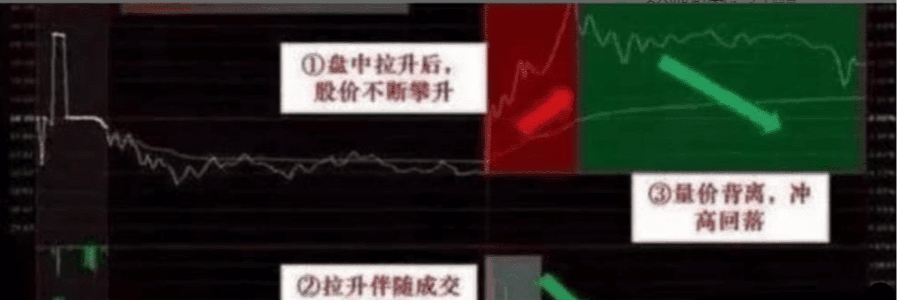
Volume increases during declines
- Volume-price divergence
Stock prices continue to test lower levels, each test accompanied by an increase in trading volume, showing a volume-price divergence. At this time, the stock price is likely to reach a bottom and rebound.
Rebound, investors can first closely monitor intraday changes, avoid blindly selling, and short-term investors can first consider entering the market for short-term trading. The larger the trading volume at this time, the greater the opportunity for individual stocks to rebound later.
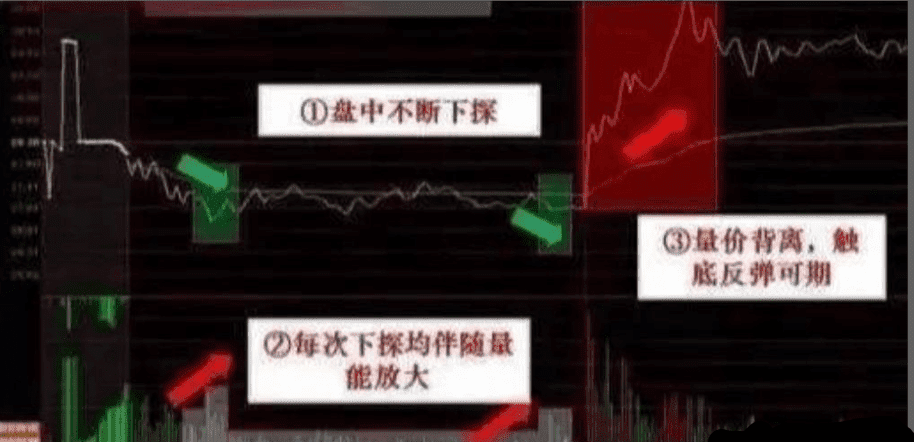
Observation area before 10:30 AM
Generally, before 10:30, stock prices still have a lot of uncertainty, and investors need to observe carefully, especially noting
Awake, do not chase when individual stocks rise sharply.
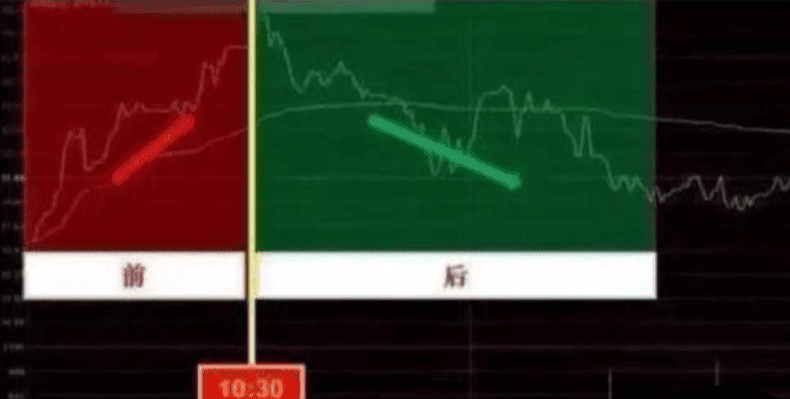
The magical 14:30
Generally, 14:30 is a very important time, as there is often a large amount of capital entering the market at the end of the day, whether from private equity or speculative funds. This will affect the collective bidding the next day, so many short-term investors will choose to enter the market for ultra-short-term operations after 14:30 to capture the price difference.

The volume-price coordination of the intraday trend is primarily used not only to observe features but also to observe changes. After the market enters a period of fluctuation, the opportunity for short-term intervention is at the moment when the intraday trend shifts from negative to positive coordination. Similarly, short-term exit
Opportunities in the market occur at the moment when the intraday trend shifts from positive to negative coordination.
Notes on buying and selling in intraday charts:
1. Do not choose to buy when the intraday trend is downward;
2. After the average price line breaks through yesterday's closing price and the stock price pulls back to the average price line, buy;
3. After the stock price has three consecutive limit-ups following two consecutive limit-ups, as long as the limit-up board cannot be locked, sell decisively:
4. Use intraday charts to determine buying timing. Generally, choose buying timing in the half-hour after the morning opening and the half-hour before the afternoon closing:
5. In the intraday chart, every time the stock price rebounds without stabilizing the average price line while the stock price is going down, it is a selling point;
6. If the average price line in the intraday trend has not broken through the previous trading day's closing price, do not buy.
I once saw a short-term expert, how powerful? 4600 stocks in their eyes are only two stocks, one is the leader, and the other is to catch up; the rest
are all bugs.
Selecting this stock may take some time. Once determined, operate directly until the leader falls, while all non-operating time is in cash, tightly
Keep an eye on new leading stocks.
Since you choose to do short-term trading, you need to rush to the front row of this market. Don't timidly select a zombie stock, doing reverse T daily, and falsely claiming to be doing
Super short? Is it easy for experts? Here are a few questions to ask yourself whether you can solve them:
1. There are always only two or three in the watchlist, and they are all leading stocks for trial and error.
You can't do it because your watchlist must have many stocks. Today you see this stock is doing well, tomorrow you hear that expert recommends this one, and the day after tomorrow
There are forums discussing stocks.
After a few days, there are no less than dozens in my watchlist, and there are even a hundred, it's really dazzling, and I regret daily not buying the limit-up in my watchlist.
Fang Xinxia's saying is good, 'Force yourself to only choose leading stocks in your watchlist, so you can get closer to the leaders.' Extra distractions will only hinder
Your own eyes, this may be the barrier that hinders you from seeing the core of the market.
2. When you act, be like thunder. Confirming the leader requires decisiveness. Take your share of the leader and harbor the belief in the leader.
You don't dare. You are just lucky that the leader you selected is getting dusty in your watchlist. Every day you compare it with the limit-down stocks you bought, still muttering that if only you had entered.
Everyday is like this, but you've bought everything else in your watchlist, only not daring to enter the leader.
This indicates that one is still too naive about short-term speculation. In this market, one can either become one of the very few speculators, or choose to invest steadily.
Make waves, otherwise, you won't be able to hold onto your little profits.
3. Can you keep cash? As long as there are no opportunities, keep cash, and even prefer being in cash.
You can't help it. You can hardly wait for the stock market to open on weekends, and you can hardly wait for the year to pass because the stock market is your money tree.
Quit school to trade stocks, in order to develop the habit of keeping cash, divide your account into two, and enforce a half or zero position.
His description of keeping cash is, 'Keeping cash is not simply relaxing, but being in a tense state of being ready to intervene at any time, wanting money not in the market but the mind
In the market. If you can't even keep cash, your temperament is still too impatient, and you need to refine it.
The above three points can be considered the qualities of a speculative expert. As for the level, that's where the differences lie.
Less browsing, more response. Experts are not afraid of unexpected situations because they have experienced all kinds of unexpected situations. When soldiers come, block them; when water comes, cover it.
As for what can foretell future stock prices, do you believe this? Which expert, just dissect them, studying them is more valuable than studying stocks.
Meaning.
Finally, let me share several key phrases for short-term trading:
Trading stocks, short-term trading is a style many investors like, but hitting the right short-term buying points is not that easy. Below, I will share with you
Share the operational skills for starting points in short-term trading. It is recommended to collect and forward!
Short-term stock selection techniques include:
1. Pay attention to the themes and hotspots of individual stocks
Investors should focus on those stocks with substantial themes and hot sectors, and actively seek opportunities for those stocks to catch up and decisively exit.
Strike, otherwise you will lose good opportunities.
2. Pay attention to the KDJ indicator +
When the KDJ indicator sends out buy and sell signals, actions should be taken promptly, especially when the K value is below 50 and the D value is below 20, roughly
The rate suggests that the stock price is not far from the bottom area and may soon rise to a high price range. At this time, as long as the KD indicator is not in
An oversold area sending out real signals may indicate the beginning of a medium- to short-term rebound.
3. Analyze the relationship between volume and price
Short-term operations must pay special attention to observing the relationship between trading volume and price, that is, the relationship between trading volume and stock price. Generally speaking, when the price rises, the volume should increase.
The rise in stock prices does not synchronize with an increase in trading volume, indicating heavy selling pressure or funds being trapped, making it difficult to continue. Therefore, such an increase
The market is difficult to sustain. If at this time the K-line is fluctuating within a low price range, investors should look a bit higher; when it's operating in a high price range, investors can observe appropriately.
4. Pay attention to technical patterns
When individual stocks show a low-level upward attacking pattern, such as a small duck coming out of the water, a rounded bottom, two rising days sandwiching a falling day, emerging lotus, MACD turning red for the second time, etc., these are patterns that are more suitable for short-term operations.
5. Choose strong stocks +
Investors can choose the stocks with the strongest recent trends for short-term operations. Strong stocks have a strong willingness from the operators to continue pushing up due to continuous rises or limit-ups.
Grasp short-term buying and selling points
1. Choose strong stocks for operations
Short-term operations can choose individual stocks from strong sectors, as these stocks are usually the focus of market funds and have high potential for increases.
2. Pay attention to the support and pressure levels of individual stocks
When a stock runs to an important support or pressure level, it may produce a pullback or rise, and investors can use these positions to judge buying points.
3. Grasp entry points
When buying, you can choose to buy when the stock price pulls back to the support level, or you can choose to buy after the stock price breaks through the pressure level. At the same time, you can
Choose to buy at the low startup and hold during the upward trend.
Short-term trading emphasizes 'short, precise, and fierce'. Simply put, it means maximizing profits in a relatively short time.
The essence of short-term trading lies in execution, and the premise of execution is cognition, while cognition must be implemented into a clear trading plan. In fact, short-term trading
There are still many techniques in trading, in addition to good execution, stock selection, technology, emotions, funds, and positions all need to be considered comprehensively.
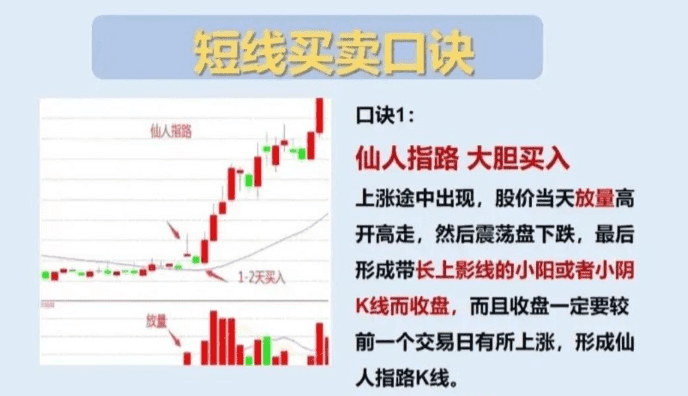
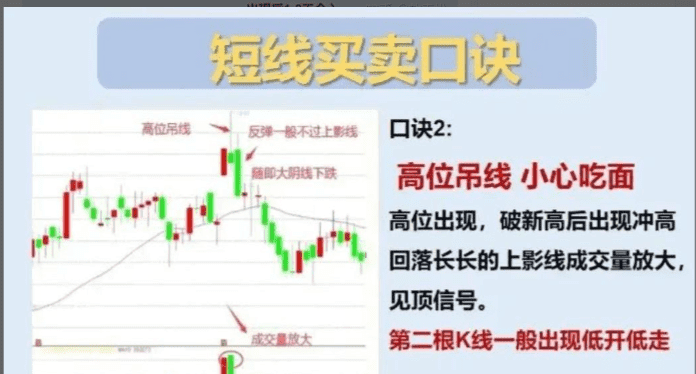
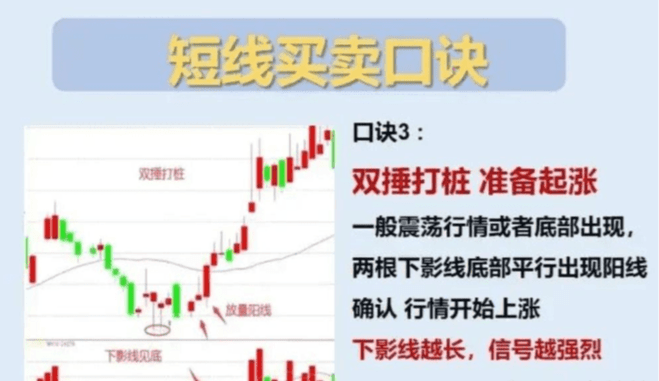
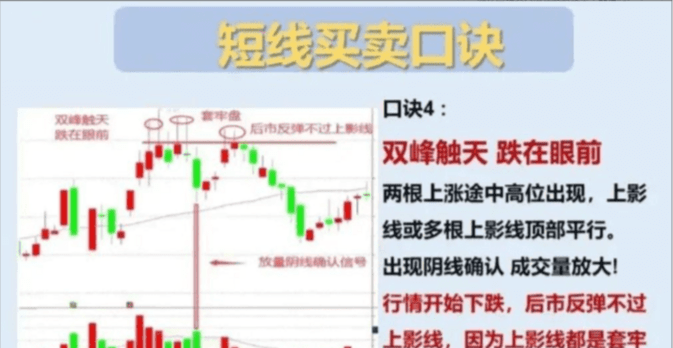
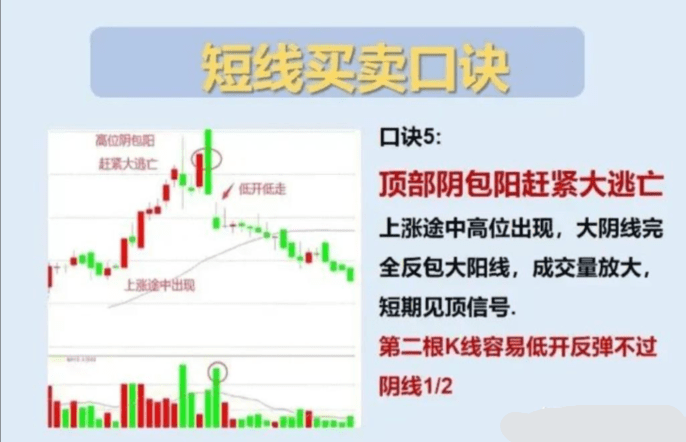
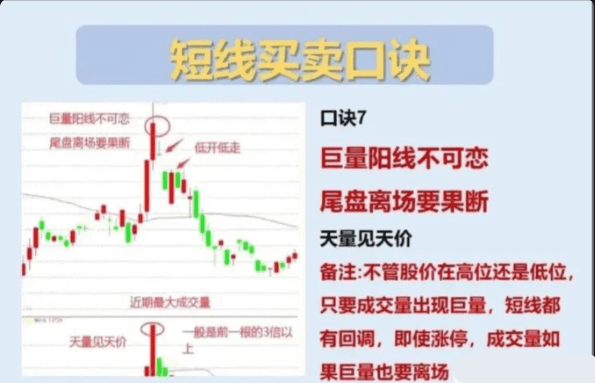
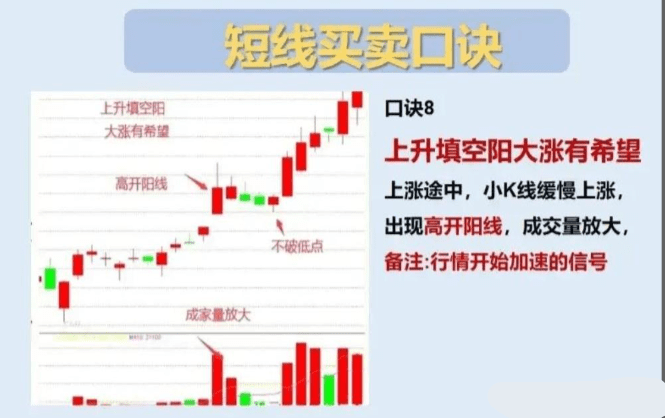
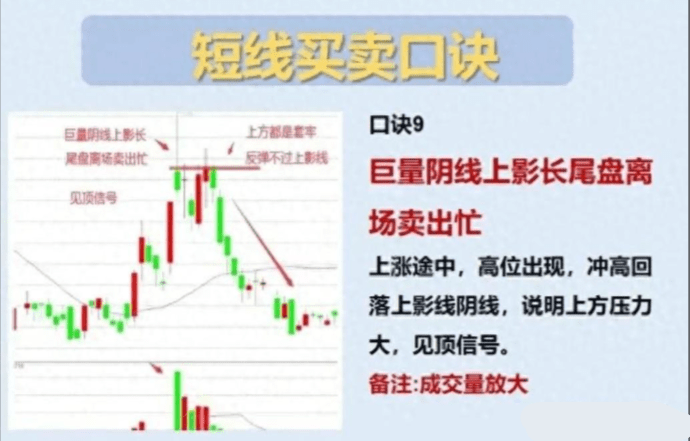
Finally, the author summarizes five key points for long-term stable profits in the stock market.
1. The first point is also the most important, do not select stocks when the market is good because when the market is good, everything is rising, and you can't discern the good from the bad stocks. Often, good stocks only show their value when the market is bad! This is also why stocks should be selected before the bull market arrives because stocks bought during a bull market are often very expensive!
2. The second point is that the rise in stock prices is not closely related to market value or price; it is related to the future prospects of listed companies and whether they can make profits in the future. Therefore, when selecting stocks, one should choose listed companies that have long-term substantial benefits in their industries. Such listed companies often see their stock prices rise over the long term! It's important to note that conceptual benefits are often just fleeting!
3. Earn money within your ability. With more and more listed companies, over 5000 stocks, if you invest in a stock that you haven't researched and are not familiar with, you won't feel secure about buying it, and you'll be even less confident holding it. If there is a slight reverse fluctuation, you won't be able to bear it, so choose listed companies within your knowledge range and always select stocks from industries you are familiar with to earn money within your understanding.
4. Do not be misled by past stock price increases when selecting stocks. Most retail investors realize good stocks when the prices are continuously rising. Anchoring awareness poses a potential huge risk. The future trend of stock prices will not depend on how much they increased in the past, and whether stock prices can continue to rise is only related to the future. Moreover, after a significant rise in stock prices, larger performance support is needed to sustain this rise. If not, it can easily reach a peak!
So whether it can continue is very important. Usually, what's rising is not what we focus on unless it has long-term potential performance support.
5. When selecting stocks, first look at industry prospects and policy prospects, then choose sectors. Within the sectors, combine fundamentals, trends, and whether there is a bottom structure to select stocks. Then choose active leading stocks or industry subsector leaders!

Finally, those who have been through the rain always want to hold an umbrella for others. The above are my summaries of 8 years of practical experience and skills in stock trading. Having gone through isolated and helpless days, I feel for those who suffer losses, wanting to extend a helping hand, hoping to make up for that regret of wanting to be pulled up at that time, as if crossing time to hold an umbrella for my past self in the rain. This is also my original intention to share, hoping to help the vast number of retail investors avoid some detours!
One wooden boat cannot make a journey; a lone sail cannot travel far! In your circle, if you don't have a good circle and have no first-hand news from the cryptocurrency circle, then it's advisable to pay attention to Lao Wang, who will help you get rich. Welcome to join the team!
